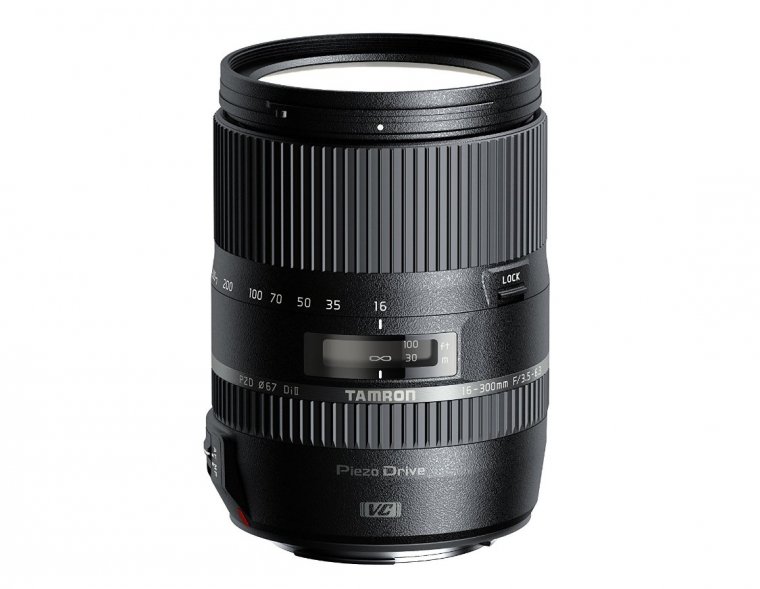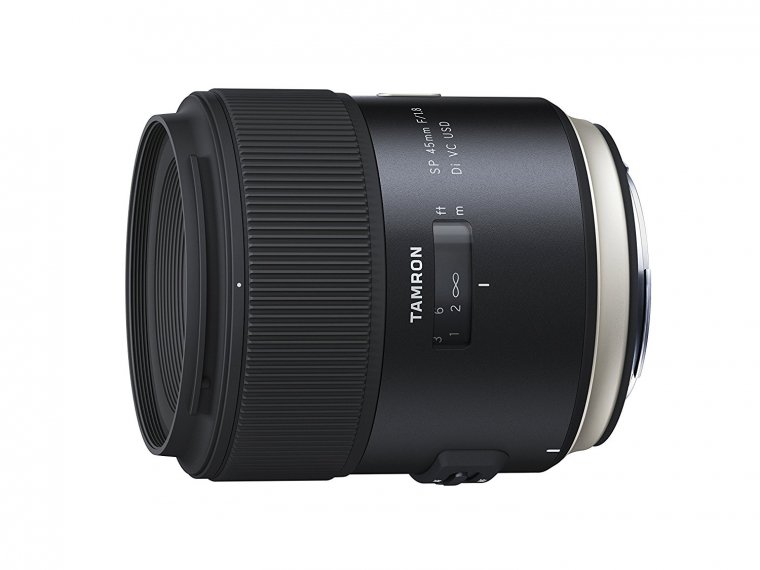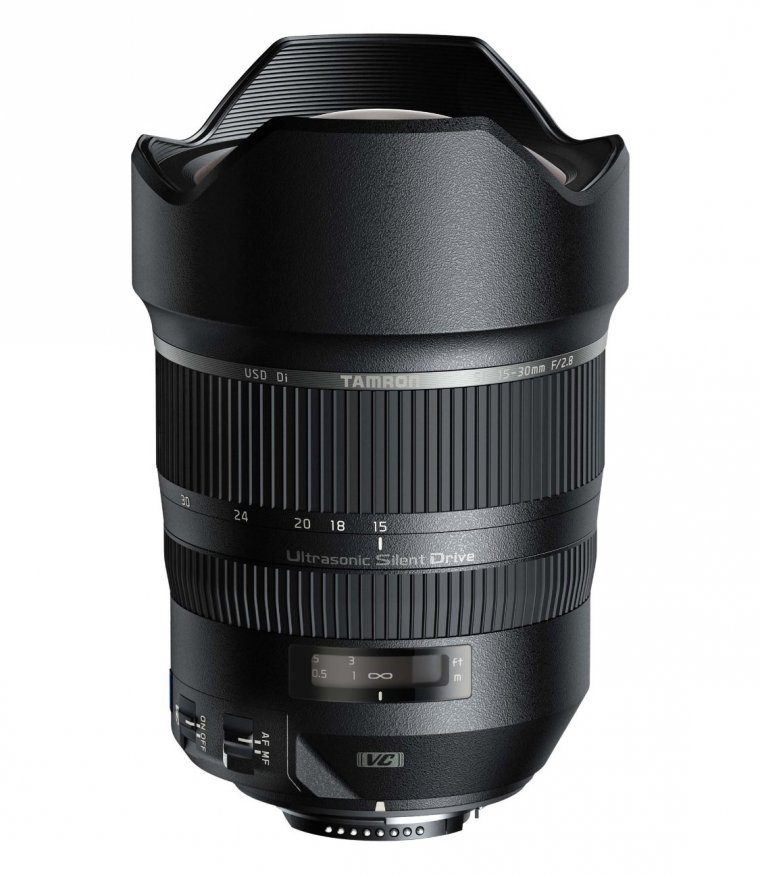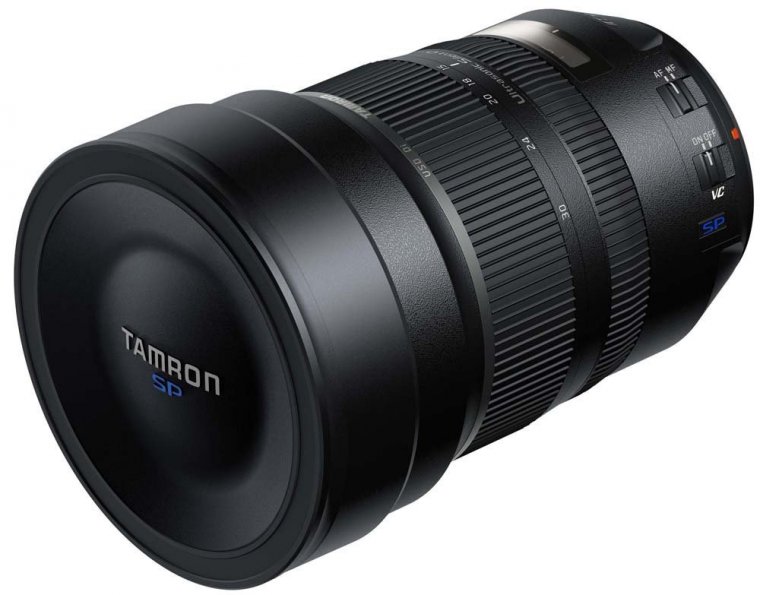
As many of you should know, Tamron is a Japanese manufacturer of photographic lenses, among other optical products. With a good variety of products for either Nikon, Canon, Sony, and Pentax; we would like to invite you to read a review of three of the best Tamron lenses produced to the date.
It’s always fun and useful to own an interchangeable lens camera and lots of different lenses for each occasion, but on the other hand there are some situations where it isn’t the most practical option. Sometimes you just want to travel light and not be burdened by the weight of your gear but still use a DSLR and all of its advantages. In these occasions, people’s choices usually split into two groups; those who choose to use some sort of kind of high-end compact camera and those who decide to stick with their DSLRs but stick with only one lens as their walk around lens. In the case of the latter, there are many options out there but for those who want an experience similar to the one you get with compact cameras with long zoom ranges a superzoom lens is their only answer. That’s where the Tamron 16-300mm Di II VC PZD Macro comes in with the most impressive zoom range you’ll find in a lens up to this date. Let’s see how this lens holds up in our tests and are there many compromises being made with such a uniquely designed piece of kit for it to be considered a worthy purchase.

First, let’s get one thing straight before we continue on to the build quality. This lens is designed to work only on cropped sensor APS-C cameras and is not compatible with full frame cameras. Sorry, full frame camera users. So it’s focal range really amounts to somewhere around 24-450mm if you’re using a Nikon DSLR and 26-490mm if you’re using one of Canon’s DSLRs. It really is an impressive range for any zoom lens equaling to around 18x in compact camera terms which are quite rare to see in a DSLR considering you get a very wide angle lens and a long telephoto lens in one package. Most of the lenses of this type usually start at 18mm, which is still considered a wide angle focal length but is also something you can easily get with a regular kit lens. 16mm isn’t a dramatic difference from 18mm but is still very nice to have since most of the people buying this lens probably don’t plan to carry additional lenses with them while using this one so they’ll always appreciate the wider field of view.
The lens is primarily made out of plastic but not of the cheap kind and still feels sturdy in the hand. It also looks very modern and is quite stylish. Only the lens mount is made out of metal which is a must have for a lens that weighs 540 grams and puts some strain on your camera’s mount. The zoom and the focus ring also engineered well and work with no problems. Other positives about its hardware are the inclusion of optical image stabilization (VC) and quite good macro performance with a reproduction ratio of 0.34x. The stabilization itself is quite effective and keeps the lens free of any wobble at 300mm, so kudos to Tamron for that. The only thing that could be considered a flaw in its design is the dark maximum aperture of f6.3 at the longest end, but that could also be forgiven when you have such a good zoom range, to begin with.

Photo courtesy of C.M. Photography
The PZD in the name of the lens stands for Piezo Drive Ultrasonic Motor which is quite a fancy name for the autofocus technology inside your lens. The autofocus itself is nearly silent in operation which isn’t always the case on superzoom lenses. It’s also very quick at shorter focal lengths and good at its longest end. It’s still not the quickest around, but still quite respectable. You can use this lens for sports and action shooting if you’re able to use your camera’s center AF point as often as you can and that’s when you’ll squeeze the most accuracy out of it. There is one slight annoyance that could happen to you if you aren’t using a top of the line DSLR. In some rare occasions, the lens simply refused to focus even with the center AF point and needed to be focused on something else to make the AF work again. The reason for that is that the AF systems on most DSLRs aren’t designed to focus well when using the apertures below f5.6 and using the Tamron at 300mm and at an aperture of f6.3 results in somewhat unpredictable behavior from time to time, so keep that in mind. It’s not really a major problem that breaks the lens since it doesn’t happen very often but we still thought we should point it out in case it happened to you and you thought there was something wrong with your copy of the lens. If you’ve planned to use teleconverters with this lens, we strongly advise you against doing that if you care about AF accuracy. You will be fine if you plan to manually focus, of course.

Photo courtesy of Manuel Lopez
When it comes to image quality, specifically sharpness, this lens acts as the rest of superzoom lenses being the sharpest at its wider angles and gradually getting softer at its longer end. Since it’s a successor to the 18-270mm lens we are pleased that Tamron also improved the image quality together with the improved zoom range, which couldn’t have been an easy thing to do. You will usually get sharp results without stopping down until you reach 200mm. From 200m and upwards it’s advised that you stop down to f8 or f11 to get a sharp image across the entire frame. There is some noticeable chromatic aberration as well as a distortion which is to be expected for a superzoom lens. Fortunately, with enough patience, you can correct it all in post processing. The story with vignetting is a more positive one with it appearing only in very small amounts or not appearing at all. Flare is also very well controlled and not a problem at all. While it isn’t easy to get very blurred backgrounds in your photos with a superzoom lens you can still achieve it when zooming into 200mm and above and we are happy to say that you’ll generally get nice results with this lens in regard to that.
So to answer the question from the beginning of the article; is this lens worth the purchase as a general walk around lens? Yeah, it could be for a lot of people. Optically it won’t be as good as your shorter zoom or prime lenses but it’s still capable of producing some nice quality shots even if you don’t take into account its massive zoom range. It may have some quirks like average AF accuracy, distortions, and chromatic aberrations but it’s still tolerable for the flexibility you will be getting with this lens. Keep it stopped down at the longer end and focus carefully and you’ll be very happy with it.
We are all excited every time a new and a promising lens reaches the market and often admire those professional high-performance lenses the big boys produce. Like on almost every market that has anything to do with consumer electronics it’s tough to compete without some reputation acting as your ladder to the top and you can easily fall into oblivion if you aren’t pushing yourself to the maximum and always striving to improve your products. Tamron is one of those companies that have been around for a long time but never had a steady lineup of memorable lenses for a longer period of time so they’ve always lived in the shadow of the first-party lens makers and only popping out of it from time to time with a good lens that was made to compete with them. It seems that those times are slowly coming to an end with companies finally realizing that they have to do more if they want to compete and take their products to the next level. In this case, we are taking a closer look at exactly one of these lenses that are ready to make a new name for Tamron in the ever-growing market. This is the 45mm f1.8 VC Di USD.

Firstly, we want to point out another interesting fact about Tamron; did you know that this is the first Tamron lens in a long time that comes with the aperture of f1.8? Yes, we were as equally surprised as you are. One possible explanation could lie in the fact that the market is overflowing with prime lenses with large apertures, especially those in the focal range of 50mm making it extremely difficult to stand out while making such a lens. Well, from where we stand it looks like Tamron were aware of that fact while designing this lens and indeed tried to create something a little different than usual.
Let’s start with the overall design of the lens. Right out of the gate we can see that Tamron mean serious business with this lens. It’s a totally new design from the company that looks very premium with each detail on the lens and is even more helped by the fact that the lens is made of aluminum alloy. It all looks tightly assembled and very reassuring that this is a lens that was made to last. The lens is also weather-sealed making it a nice bonus for anyone that plans to really test its build quality. Another unexpected bonus for this type of lens is the inclusion of image stabilization or Vibration Compensation how Tamron like to call it. We would have never expected to see it in a fast aperture prime lens but it’s certainly an excellent feature to have nevertheless. Another interesting thing is the focal length of 45mm. We could debate if Tamron chose this focal length solely as another way to differentiate their lens from the crowd or if there is a deeper meaning to it. The first reason that comes to mind is that they wanted to appease to the APS-C camera users by making a lens that is a little less constricting to use on a cropped sensor than the usual 50mm lenses. The last useful hardware feature has to be this lens’s minimum focus distance of 0.29m (equaling to a magnification of 0.29x). While this isn’t exactly in the territory of real macro photography it’s certainly good enough to give this lens additional points for versatility and making it a pretty good choice for photographing flowers or normal sized bugs. Well, this was a mouthful; now let’s move on to autofocus.

From the long list of different abbreviations that Tamron puts in the name of their lenses, in this case, we will just focus on one of them; the USD. It stands for Ultrasonic Drive autofocus motor and in short it means that the lens focuses internally and also enables Full-Time Manual focusing. Both the speed and the accuracy of the autofocus system are average at best. In most cases, you won’t have any trouble with it unless you are shooting a lot of moving subject or in low light. It is still an improvement over the older Tamron lenses but still requires more refinement to compete with other lenses at this price point. On the other hand, manual focusing is a really nice experience thanks to the large and smooth focus ring that rotates up to 212 degrees. You can really make some precise focus pulls with this lens.
Now, let’s take a look at the most important aspect of every lens, its image quality. We all know that almost every prime lens of this type is usually very sharp when stopped down to f4 or f5.6 so we won’t bother with the image quality on those apertures because the Tamron is no different in this case. One thing that is good to hear is that it’s nicely sharp right from f1.8 from the center right into the corners. That is a very rare performance to see on a lens with such a large aperture. If you stop down to f2.8 you’ll get even more sharpness and really excellent image quality. Unfortunately, there is some noticeable vignetting from f1.8 to f2 which clears up when you stop the lens down to f4. It’s nothing to write home about, just average. The lateral chromatic aberration is very well controlled and almost non-existent. The story with longitudinal chromatic aberration isn’t as good but it isn’t bad either, so overall it’s still a good performance. The lens is quite resistant to lens flare when wide open which is excellent to see in a lens that has to deal with very large amounts of light. Finally, the bokeh is quite nice which is helped by the 9-blade aperture to produce nice and rounded “bokeh balls” even when the aperture is stopped down.

Photo courtesy of Josef Jägerstedt
In conclusion, the Tamron 45mm f1.8 VC Di USD is a very good lens. On the positive side we have great build quality, feature set, and image quality and on the negative side, we can only mention an average AF system that still has room for improvement. Overall, it’s a really nice showing from Tamron and it’s always good to see a third-party lens manufacturer making such a respectable lens that is able to compete with first-party offerings in so many ways. We hope that they will make enough impact with their lenses which would force the big boys to move out of their comfort zone and innovate once again. It’s a win-win situation for us, consumers, after all.
Finding a good and reasonably priced ultra-wide angle lens is never an easy task, especially if you’re using one of the more expensive full-frame cameras. You can find some bargains from time to time but that’s mostly the case with APS-C cameras with quality first-party glass for full-frame almost always sporting luxurious prices. That’s where third-party lens manufacturers come into play to try and change that. Many have tried but with varying success. The good news is that Tamron means serious business with their 15-30mm f2.8 Di VC USD lens. Mind you, this is not another budget offering from Tamron, this is full-on high-quality glass we are talking about here that was made to directly compete with the best that big boys have to offer and even knock them down with competitive pricing. Tamron has a lot riding on this lens, so let’s see if it lives up to its promise.
Finding a good and reasonably priced ultra-wide angle lens is never an easy task, especially if you’re using one of the more expensive full-frame cameras. You can find some bargains from time to time but that’s mostly the case with APS-C cameras with quality first-party glass for full-frame almost always sporting luxurious prices. That’s where third-party lens manufacturers come into play to try and change that. Many have tried but with varying success. The good news is that Tamron means serious business with their 15-30mm f2.8 Di VC USD lens. Mind you, this is not another budget offering from Tamron, this is full on high-quality glass we are talking here that was made to directly compete with the best that big boys have to offer and even knock them down with competitive pricing. Tamron has a lot riding on this lens, so let’s see if it lives up to its promise.

First, let’s touch on some of its specifications and features. Straight from its name you can already notice a few things, like its focal length, maximum constant aperture of f2.8 through its entire range and image stabilization (VC). Those are its tree main selling points right off the bat. While APS-C camera users may not find this lens very exciting because 15mm isn’t really that ultra-wide angle on a cropped sensor those with full-frame cameras certainly will. There are full-frame lenses on the market that go wider than 15mm but they are quite rare and a lot more expensive than the Tamron, so there’s no point in comparing them with this lens. You still get a very wide angle of view with 15mm, so let’s not dwell on that anymore.
The longest end of the zoom range at 30mm is also nice to have to give you a normal wide angle of view for situations like shooting groups of people or for street photography. It would be nice if Tamron were able to push a little further to 35mm, but we aren’t complaining too much since it’s still a nice range overall. The constant f2.8 aperture would be a nice feature even without the image stabilization, but the combo of the two makes this a beast of a lens to use in low light. You will be able to take both the images of static subjects at lower ISOs or get good enough shutter speeds for those that are moving. It’s also a lens that those who specialize in astrophotography will really love. Both of these features will also benefit videographers and filmmakers for obvious reasons.

Photo courtesy of Ian Inverarity
The optical design of the Tamron consists of 18 elements in 13 groups which are a lot of glass for a wide angle zoom lens. Inside you’ll find different types of elements like fluorine coated elements which are designed to repel dirt or water and those with special eBAND coating designed to fight against flare. The lens itself is quite heavy at 1.1 Kg, a weight you will definitely feel after longer periods of use, especially mounted on already bulky full-frame bodies. On the positive side, that also means that it’s build to extremely high standards despite being made out of plastic (which is a good thing, in this case, it would weigh even more if it was made out of metal). The lens also has u built-in lens hood, which is a nice touch from Tamron because you really need to protect that large front element from scratches and any other dangers. You also get weather sealing with a rubber gasket on the lens mount.
The autofocus system in this lens is the USD (Ultra Sonic Drive Motor) which can now be found in other Tamron’s lenses as well. It’s quiet, accurate and fast enough for most uses. Autofocus is one of the areas where third-party lenses are still lagging behind the first-party ones and still haven’t caught up to them in a lot of cases. The 15-30mm, in particular, is doing a really nice job nevertheless and comes really close to its competition when it comes to autofocus speed. Luckily for it, ultra-wide angle lenses themselves don’t require abnormally fast focus speeds anyway because they weren’t meant to be used as lenses for shooting sports or fast action in the first place.

None of these things would matter if they aren’t backed up by good image quality, so let’s see how the 15-30mm really performs. At its widest angle and wide open it’s very sharp in the centre of the frame but softer in the edges, which is to be expected for an ultra-wide angle lens at f2.8. Stopping down to f4 or f5.6 brings great sharpness across the entire image frame. While we zoom in a little the story is about the same; excellent centre sharpness wide open and great sharpness overall when stopped down. At 30mm the image quality deteriorates a little and even the center sharpness starts to suffer wide open. Luckily, again, stopping down a little solves the problem and you’ll get good image quality across the frame. So the conclusion when it comes to sharpness is that you only use this lens at f2.8 if you need the extra amount of light and stick to f4 or 5.6 in all other occasions. Interestingly enough this is the case with most lenses of this type, very few of them are very sharp wide open and at their longest focal lengths so we can’t really put much blame on Tamron in this case. When it comes to contrast and colors, they are both well balanced and there are no problems in this regard. Out of focus background elements, as hard as they are to achieve this type of lens, generally look pleasant and smooth, so nothing to complain about here either. Vignetting is mostly pronounced at 15mm and wide open but it quickly disappears as soon as you stop down to f4, so it’s a good performance overall. When it comes to flaring, thanks to the special eBAND coatings we mentioned at the beginning of the review, the 15-30mm exhibits excellent performance, especially if you consider the fact that flaring often ends up to be an Achilles heel of many ultra-wide angle lenses. Distortion performance is about average for this type of lens; you get some noticeable barrel distortion at 15mm, disappearing at around 20mm and turning into light pincushion distortion at 30mm. Lastly, chromatic aberrations are almost non-existent and well controlled; you probably won’t even notice them 99% of the time.
After all of this, we can really say that we are quite happy with what Tamron has done with this lens. They’ve really managed to produce one stunning lens that can easily compete with the lot more expensive offerings from first-party manufacturers. This lens is a real showcase of how third-party companies really mean serious business in these times and that they’ve stepped up their game. Now, instead of just being cheaper alternatives solely because of their price they are now real contenders in other aspects of build and image quality. We aren’t saying that there haven’t been any quality lenses from them before, but now it happens way more often than ever before. If you still want to play it safe by sticking to your first-party lenses no matter the premium you’re paying for it, it’s fine and there are still reasons to do so. For anyone else looking for a premium ultra-wide angle lens but who still care about saving some of their hard earned money, the Tamron 15-30mm f2.8 Di VC USD will be an always be a great choice. Well done, Tamron!
(Header photo courtesy of Sascha Udlng)
Comments (0)
There are no comments yet.